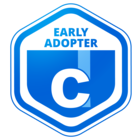Hey all,
Launching this post to gather people’s best ideas / best practices for deploying courses in multiple languages.
We have several customers who have taken different approaches to this, each with their own benefits and pitfalls.
I’m interested to hear how others arrange their courses (e.g. into language subfolders? or with separate courses and equivalencies?) and what your preferences are.
Many thanks in advance!
Evan, Skillslive Edu








